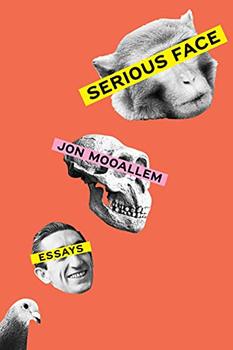Summary | Excerpt | Reviews | Beyond the Book | Readalikes | Genres & Themes | Author Bio

 Book Reviewed by:
Book Reviewed by:
Erin Lyndal Martin
Buy This Book
A House at the End of the World
| 2017 |
First, the backstory, because, B. J. Miller has found, the backstory is unavoidable when you are missing three limbs.
Miller was a sophomore at Princeton when, one Monday night in November 1990, he and two friends went out for drinks and, at around 4:00 a.m., found themselves ambling toward a convenience store for sandwiches. They decided to climb a commuter train parked at the adjacent rail station, for fun. Miller scaled it first. When he got to the top, electrical current arced out of a piece of equipment into the watch on his wrist. Eleven thousand volts shot through his left arm and down his legs. When his friends reached him on the roof of the train, smoke was rising from his feet.
Miller remembers none of this. His memories don't kick in until several days later, when he woke up in the burn unit of St. Barnabas Medical Center, in Livingston, New Jersey. Thinking he'd resurfaced from a terrible dream, he tried to shamble across his hospital room on the charred crusts of his legs until he used up the slack of his catheter tube and the device tore out of his body. Then, all the pain hit him at once.
Doctors took each leg just below the knee, one at a time. Then they turned to his arm, which triggered in Miller a deeper grief. ("Hands do stuff," he explains. "Your foot is just a stinky, clunky little platform.") For weeks, the hospital staff considered him close to death. But Miller, in a devastated haze, didn't know that. He only worried about who he would be when he survived.
No visitors were allowed in his hospital room; the burn unit was a sterile environment. But on the morning Miller's arm was going to be amputated, just below the elbow, a dozen friends and family members packed into a ten-foot-long corridor between the burn unit and the elevator, just to catch a glimpse of him as he was rolled to surgery. "They all dared to show up," Miller remembers thinking. "They all dared to look at me. They were proving that I was lovable even when I couldn't see it." This reassured Miller, as did the example of his mother, Susan, a polio survivor who has used a wheelchair since Miller was a child: She had never seemed diminished. After the operation, when Miller was rolled through the hallway again, he opened his eyes as he passed her and said: "Mom, Mom. Now you and me have more in common."
It wasn't that Miller was suddenly enlightened; internally, he was in turmoil. But in retrospect, he credits himself with doing one thing right: He saw a good way to look at his situation and committed to faking that perspective, hoping that his genuine self might eventually catch up. Miller refused, for example, to let himself believe that his life was extra difficult now, only uniquely difficult, as all lives are. He resolved to think of his suffering as simply a "variation on a theme we all deal with: to be human is really hard," he says. His life had never felt easy, even as a privileged, able-bodied suburban boy with two adoring parents, but he never felt entitled to any angst. He saw unhappiness as an illegitimate intrusion into the carefree reality he was supposed to inhabit. And don't we all do that, he realized. Don't we all treat suffering as a disruption to existence, instead of an inevitable part of it? He wondered what would happen if you could "reincorporate your version of reality, of normalcy, to accommodate suffering." As a person with a disability, he was getting all kinds of signals that he was different and separated from everyone else. But he worked hard to see himself as merely sitting somewhere on a continuum between the man on his deathbed and the woman who misplaced her car keys, to let his accident heighten his connectedness to others, instead of isolating him. This was the only way, he thought, to keep from hating his injuries and, by extension, himself.
Miller returned to Princeton the following year. He had three prosthetics and rode around campus in a golf cart with a rambunctious service dog named Vermont who, in truth, was too much of a misfit to perform any concrete service. Miller had wanted to work in foreign relations, in China; now he started studying art history. He found it to be a good lens through which to keep making sense of his injuries.
Excerpted from Serious Face by Jon Mooallem. Copyright © 2022 by Jon Mooallem. Excerpted by permission of Random House. All rights reserved. No part of this excerpt may be reproduced or reprinted without permission in writing from the publisher.





The House on Biscayne Bay
by Chanel Cleeton
As death stalks a gothic mansion in Miami, the lives of two women intertwine as the past and present collide.

The Flower Sisters
by Michelle Collins Anderson
From the new Fannie Flagg of the Ozarks, a richly-woven story of family, forgiveness, and reinvention.

The Funeral Cryer by Wenyan Lu
Debut novelist Wenyan Lu brings us this witty yet profound story about one woman's midlife reawakening in contemporary rural China.
Your guide toexceptional books
BookBrowse seeks out and recommends the best in contemporary fiction and nonfiction—books that not only engage and entertain but also deepen our understanding of ourselves and the world around us.